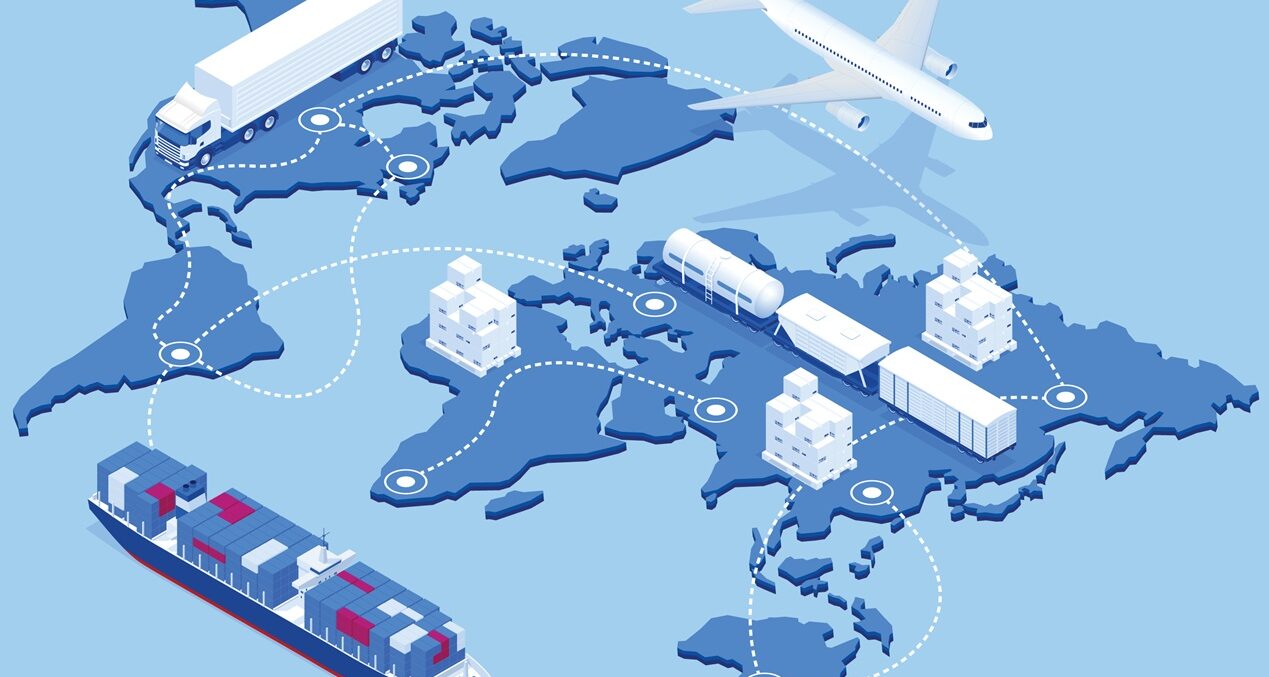
But First, Money Makes the World Go ‘Round
For all my carping about this or that program or enforcement matter, it seems to me a very good thing that Congress passed—and President Joe Biden signed into law—the spending package that will keep much of the federal government up and running for Fiscal Year 2024 (see here for the news, and here and here for a couple of the consolidated appropriations bills just signed into law).
I mean, maybe it’s not so awesome that this happened well into March, about halfway through FY 2024. Still, shutdowns are pointless inefficiencies, and relying on a string of stopgap measures is hell on planning, without actually saving money or reforming much of anything.
So what happened to the federal antitrust agencies, you ask? Subject to certain limitations, the Federal Trade Commission (FTC) received $425.7 million. That’s real money to you and me. But to place it in context, it’s a budget cut. It’s not a drastic budget cut, but it’s a cut all the same.
Last year’s FTC budget was $430 million. Federal salaries and other costs have increased in the interim, and Chair Lina Khan had requested $535 million and 1,443 full-time equivalent (FTE) positions for FY 2024. There are open positions that will not be filled, and not a few of them.
The appropriation isn’t crippling, but it’s not exactly a vote of confidence either. Given the open friction (putting it politely) between FTC leadership and the U.S. House Judiciary Committee (see my post here), it could have been worse. Much worse.
But here’s a question: will the commission—given the empty staff positions and a reduced budget—carry merrily along with some of its bolder regulatory ambitions, such as, inter alia, regulating nearly every employment agreement in the United States or proceeding with something akin to a U.S. version of the EU’s General Data Protection Regulation (GDPR)? For refreshers on those topics, see the International Center for Law & Economics’ (ICLE) comments on the proposals here and here.
The U.S. Justice Department (DOJ) also saw its ambitions for the DOJ Antitrust Division somewhat thwarted. It had requested $324.8 million, a 44.4% increase over its 2023 budget of $225 million. It received no raise at all. The $225 million it got is what it had last year in nominal terms, but a slight (if noticeable) budget cut in real terms. It could have been worse but, again, not the greatest vote of confidence by those holding the purse strings.
A Tale of Two Reports
In last week’s roundup, I wrote a fair bit about the FTC’s March 21 supply-chain report. Technically, it’s an “FTC Staff Report,” although the commission approved issuing it by vote, made various comments (here, here, and here), and even Chair Khan described it as “[t]he FTC’s report examining U.S. grocery supply chains.” She also opined, without any obvious basis in actual findings:
that dominant firms used this moment to come out ahead at the expense of their competitors and the communities they serve.
Also, no staff are named as authors of the “staff report.” Of course, that’s a slight for which they may be grateful.
Last week, I noted that the report observed (slightly, at least on one measure) increased average markups in the retail-grocery sector. It suggested that these “elevated profit levels warrant further inquiry by the Commission and policymakers.” (Because 7% is objectively too much?) At the same time, the report acknowledged that the “study did not test whether the specific companies that received 6(b) Orders increased their prices by more or less than their input cost increases.”
As I said, it’s not a finding that certain retailers, or certain large retailers, or certain retailers in more-or-less concentrated retail-grocery markets, or any retailer in particular “increased their prices by more or less than their input cost increases.” There was no such finding—among other reasons, because they lacked the pertinent data. And they lacked the pertinent data because the compulsory process orders sent to the retailers and other firms didn’t include it. And they only sent orders to three retailers.
So where did they get their data on these average price increases? As my ICLE colleague Brian Albrecht noted here, they used NETS data from the U.S. Agriculture Department (USDA), and that is not sales data. (Guestidata?)
They don’t quite claim to have identified anticompetitive conduct. Heck, they didn’t even level allegations against Amazon, and the FTC majority loves suing Amazon–it’s one of their more creative outlets. But they did say that supply-chain bottlenecks “can be created or exacerbated by limited competition,” and that supply-chain shocks “can allow major firms to entrench their dominance and further harm competition.”
Which firms are dominant in which markets again?
The report does include a sort of 20-20 hindsight observation that, in a crisis, “retailers saw that they needed to increase the resilience of their supply chains when they faced markets with few producers.” Fair enough. If you have one supplier and that source of supply dries up, then you are up a creek. If the creek’s dry, it doesn’t much matter if you have a paddle or not.
Ex post, you might want to have made other arrangements. Indeed, ex post, small, medium, and large retailers made all sorts of arrangements. But how much resilience do you want to build into your supply chain ex ante? How much should a retailer diversify its wholesale contracts or consider vertical integration? Extra manufacturing capacity? How much extra shipping capacity? Or even in-port offloading capacity? And at what cost? At what cost to consumers?
I don’t mean that redundancy should be nil or that the choices should be either one or zero. But what’s the general solution to the problem of a potential pandemic or earthquake, or war, or pick one of indefinitely many serious but unlikely events of uncertain timing, duration, and magnitude? Would competitive markets know what to want? Is there a single right answer?
If the commissioners had been able to design the supply chains for groceries in 2018—across borders, industries, etc.—what would things have looked like in 2020, 2021, or 2022?
Last week, I suggested that:
while the report doesn’t quite say so, Chair Khan’s open-meeting remarks made clear that she’s wondering if there might be some good Robinson-Patman cases in this area. Good, bad, or ugly, I’ll bet that she finds something.
This week, CPI Antitrust Chronicle reports that some on the Hill are urging her to do just that, not least against Amazon and Walmart, citing the supply-chain report that didn’t actually find any antitrust violations:
The FTC should use the RPA to combat price discrimination and concentration,” the lawmakers emphasized in their letter, which was led by Massachusetts Democratic Senator Elizabeth Warren and endorsed by several other senators and House members including New York Representative Alexandria Ocasio-Cortez.
Because, apparently, you never can have too many law-enforcement actions against Amazon, and consumers need to be protected from the scourge of low prices.
But Wait, There’s More…
The FTC actually issued two supply-chain reports in March. About a week before the “Feeding America in a Time of Crisis” report, there was another titled “Market Factors Relevant to Infant Formula Supply Disruptions: 2022.” That one was actually declared “A report of the Federal Trade Commission.”
There really were disruptions in the supply of infant formula during the COVID-19 pandemic, which really did cause hardships. It’s thus not surprising that many have clamored for investigations. But there’s still the question who did what, and what was found, if anything?
One thing that jumps out at this reader is a certain cognitive dissonance in the report. As with the March 21 report, there are intimations of competitive problems, which is not to say findings of anticompetitive conduct:
Open, fair, and competitive markets tend to reliably deliver high quality, affordable products and can also promote resiliency. By contrast, highly consolidated markets can create fragility, with a single shock or disruption having cascading and outsized effects on the entire supply chain. In other words, concentrated production can also concentrate risk.
Whatever the current FTC means by “open and fair,” I agree that competitive markets “tend to reliably deliver high quality, affordable products.” But a tendency is just that. It’s not a market–by-market guarantee of either plenty, great, or inexpensive, come what may.
What about resiliency? Sure, to a degree. But what’s the right degree?
And now comes the dissonance: There’s something of a love/hate relationship here with relevant federal programs and regulations. The report is crystal clear about a major source of concentration in the case of infant formula:
Federal programs that significantly impact the U.S. infant formula market are the U.S. Department of Agriculture’s (“USDA”) Special Supplemental Nutrition Program for Women, Infants, and Children (“WIC Program” or “WIC”) and WIC’s use of single-supplier infant formula rebate contracts, as well as the U.S. Food and Drug Administration’s (“FDA”) regulatory review framework for infant formula products.
Others have noticed regulatory issues, as well. See, e.g., Scott Lincicome, Gabriella Beaumont-Smith, and Alfredo Cabrillo Obregon here.
What’s the bit about a “single supplier”? As the report explains:
A notable feature of the U.S. infant formula market is that more than half of the routine infant formula sold in the United States—56% as of 2018—is purchased by participants in the WIC Program. Since 1989, WIC State agencies have procured infant formula pursuant to contracts in which manufacturers agree to provide large rebates in exchange for single-supplier contracts.
The report duly notes that such contracts can significantly lower program costs:
The single-supplier WIC contract mechanism creates large savings for the government, which allow WIC to provide benefits within existing budget allocations to more families than it could otherwise.
Those benefits flow to millions more families, which seems a good thing. But, then, it turns out that there are tradeoffs involved:
While cost effective, the current single-supplier WIC contract mechanism may make the U.S. infant formula market more fragile.
That is:
While this system has greatly expanded the number of WIC recipients (with attendant benefits of improved infant and maternal health), the inherent risks of state-by-state concentration became apparent during recent supply disruptions.
That all seems straightforward. It’s a clear account of the WIC program, and there’s also a useful discussion of the role of FDA regulations. And suggesting that there are tradeoffs to be considered seems right. As the report further notes:
Policymakers may want to consider that state single-supplier WIC contracts are contributing to high levels of concentration at the state level, which can leave states extremely vulnerable to supply disruptions.
Indeed, policymakers might want to consider such things. Still, it’s a very broad first step. Is there anything constructive to say about building a better policy? What is one (or one government, or each of 50 states, plus the District of Columbia) to do? Or, more in the FTC’s wheelhouse, what might antitrust enforcers do, if anything?
Over the last few years, the American people have repeatedly been reminded that neglecting to invest in the resilience of our manufacturing capacity, supply chains, distribution networks, and transportation networks can render us highly susceptible to large-scale supply disruptions and shortages.
Policies and programs relating to infant formula should be assessed with an eye towards promoting resilience so that when contaminant outbreaks, natural disasters, or other incidents occur, our markets are less susceptible to wide-scale shocks and large-scale supply disruptions.
Well, now they’ve lost me. Are they talking about public investment? Private? By whom and how much, and how directed?
It all seems a little scolding. You American people have been warned repeatedly, but did you listen? Not well enough, apparently. As one of the American people, I am duly chastened. But I’m not entirely clear on how I—or We the People—should make amends.
The WIC program has found a way to enable huge rebates which, in turn, have enabled greater access to infant formula. But it’s not an unalloyed good. And various regulatory barriers to entry have been erected under health and safety rationales. But they too are not unalloyed goods. Or free. And the tradeoffs that always matter might matter a very great deal under extreme circumstances.
What sort of expertise is the commission bringing to bear on this matter? It would seem plain that the FTC does not like the balance of tradeoffs struck by Congress, the agencies, and the states. But then again, an accompanying statement from Commissioner Rebecca Kelly Slaughter—joined by Chair Khan and Commissioner Alvaro M. Bedoya—disabuses me of that notion:
We unequivocally support the mission of the Special Supplemental Nutrition Program for Women, Infants, and Children program (“WIC Program” or “WIC”). It is essential.
Well, maybe that’s unequivocal support for the mission, but very equivocal support for the way in which it’s been executed. Still, parts of the report really do seem useful. And no intervention means no botched intervention. So there’s that.




